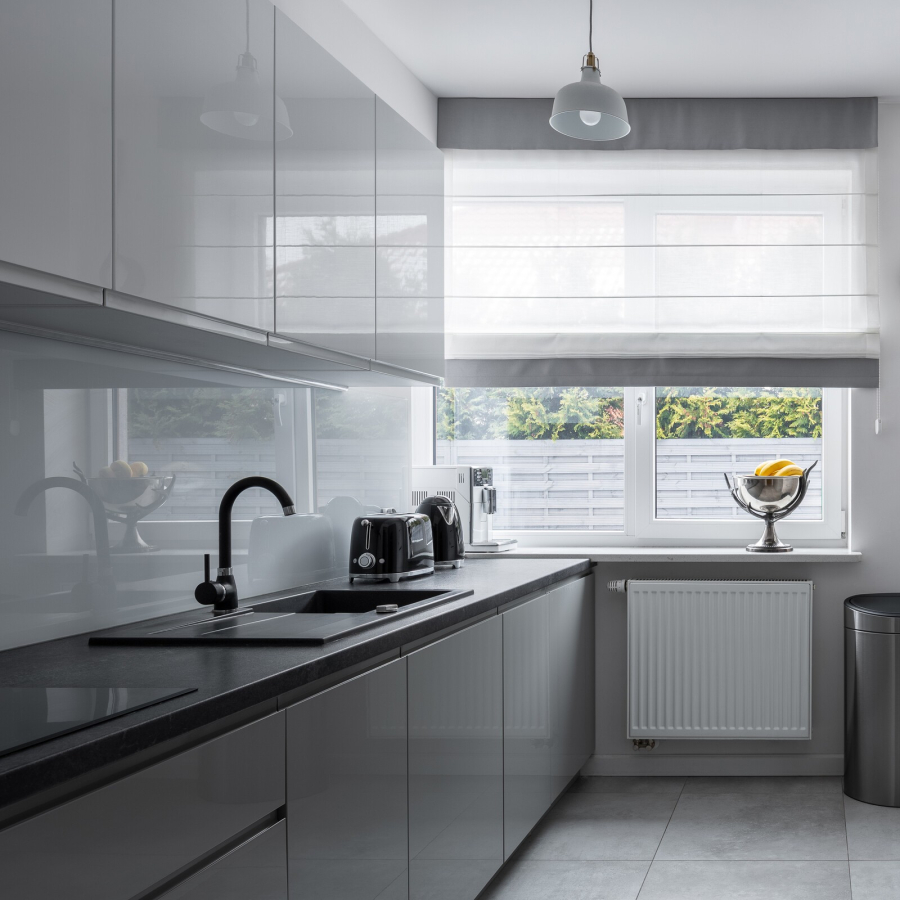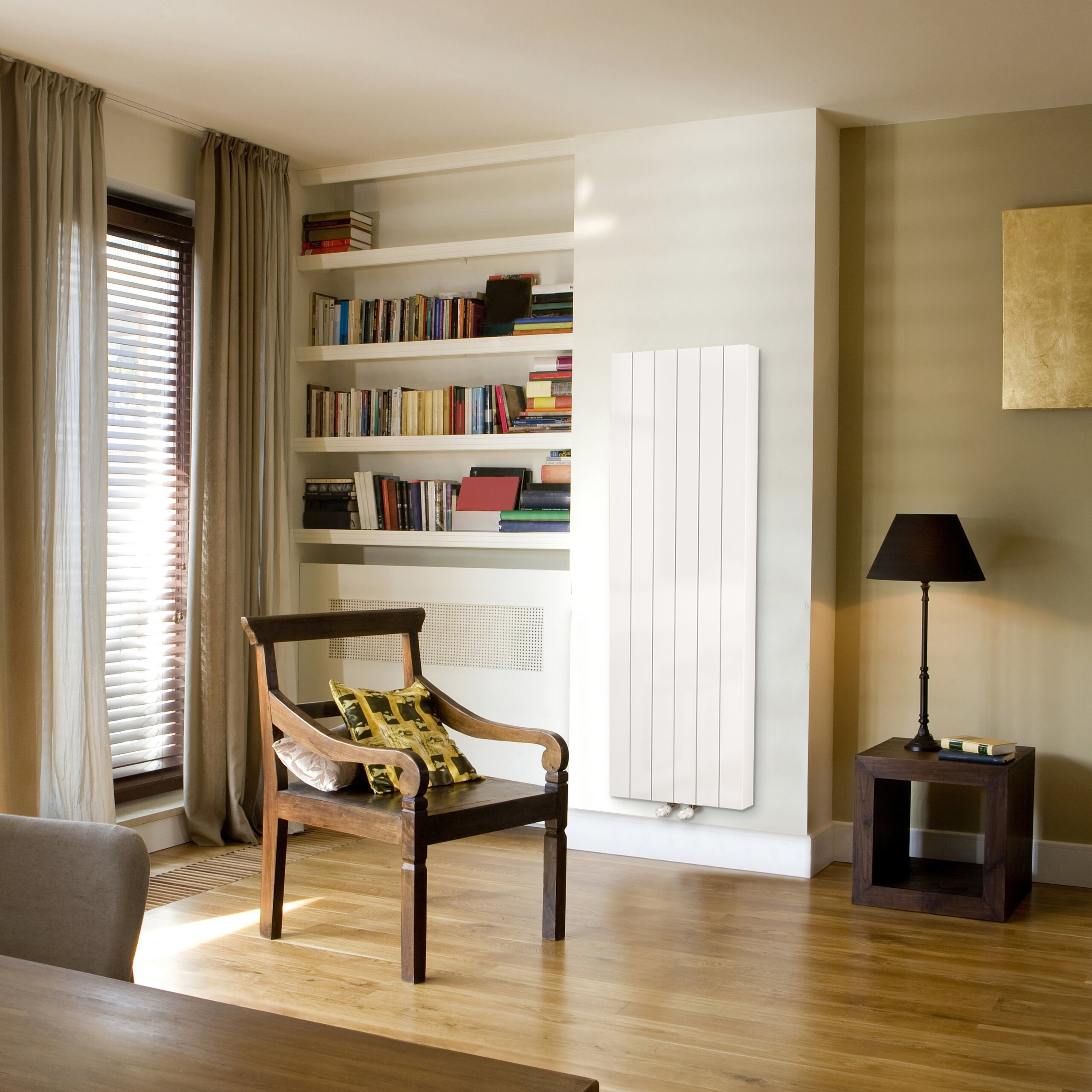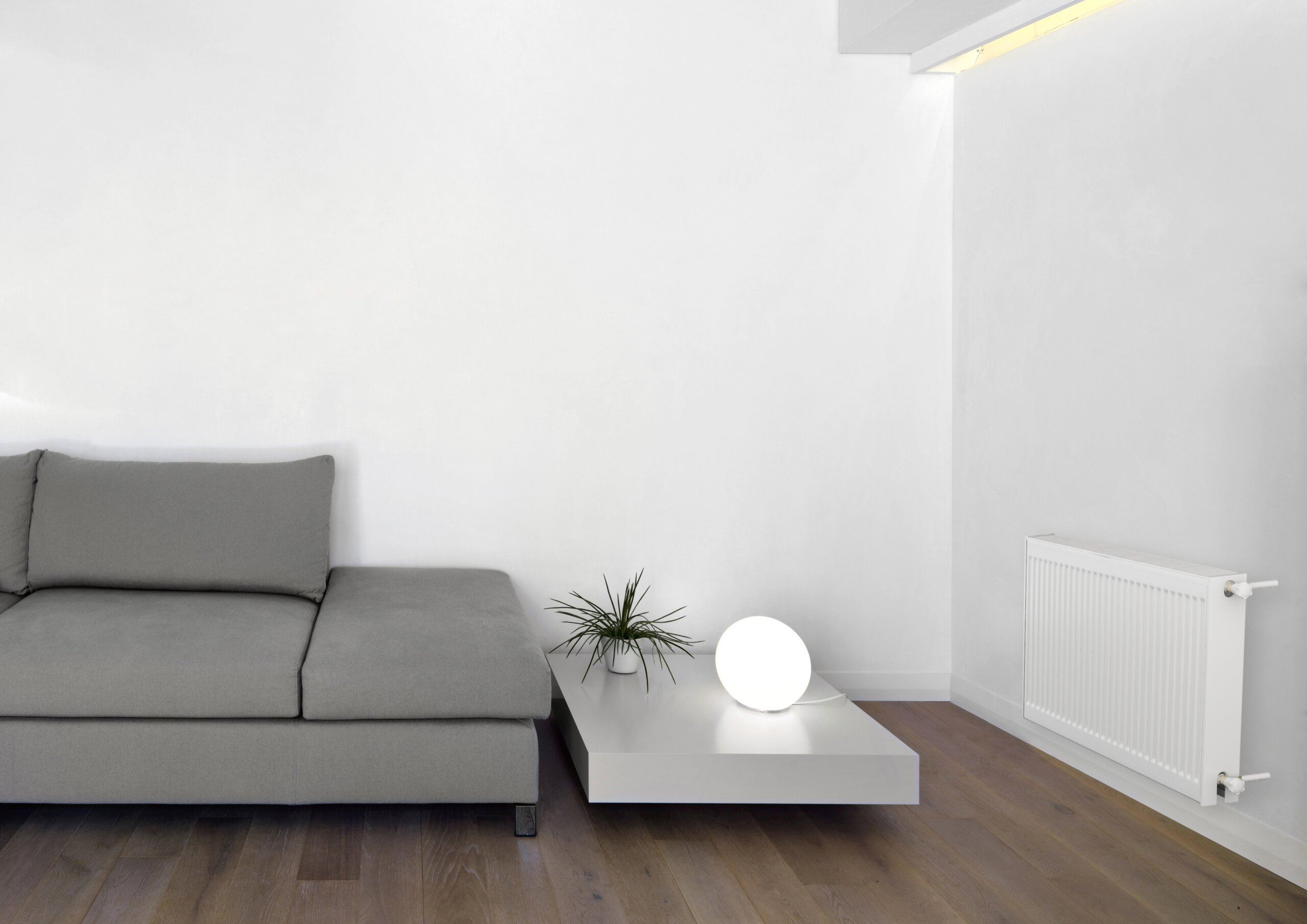
As the cost of energy continues to rise and environmental concerns become more pressing, homeowners are increasingly seeking ways to reduce their energy consumption and carbon footprint. One significant step in achieving a more sustainable and cost-effective household is through the implementation of energy-efficient radiators. Modern innovations in radiator technology have revolutionized how homes are heated, offering not only enhanced efficiency but also improved environmental performance.
Energy-efficient radiators are at the forefront of this transformation. These advanced heating solutions are designed to maximize heat output without wasting energy, making them a crucial component in the modern eco-friendly home. Whether through improved materials, innovative designs, or smarter operational technologies, these radiators ensure that comfort does not come at the expense of the environment or your wallet.
What are Energy-Efficient Radiators?
Energy-efficient radiators are heating units designed to utilize less energy while providing optimal heat output, significantly improving the overall energy consumption profile of heating systems in homes. Unlike traditional radiators, these models are engineered with advanced technologies that enhance thermal efficiency, ensuring that more of the heat generated is effectively transferred into the room, rather than being lost through the radiator itself.
Key Features of Energy-Efficient Radiators
- Materials and Design: These radiators often incorporate materials with higher thermal conductivity, such as aluminum, which allows for quick heating and better heat distribution. The design is also optimized to increase the surface area, which facilitates a more rapid and even heat dispersion.
- Thermostatic Radiator Valves (TRVs): Many energy-efficient radiators are equipped with TRVs, which allow for automatic temperature control. These valves adjust the flow of hot water through the radiator depending on the room temperature, reducing energy consumption when maximum heat is not needed.
- Improved Insulation: Some models include specialized insulation that prevents heat from escaping unnecessarily, directing it into the room instead.
Benefits of Using Energy-Efficient Radiators
- Cost Savings: One of the most immediate benefits of installing energy-efficient radiators is the reduction in heating costs. By optimizing energy use, these radiators consume less power, which can significantly lower utility bills, especially during colder months.
- Environmental Impact: Energy-efficient radiators contribute to a smaller carbon footprint. By using less energy, these systems reduce the overall demand on power plants and consequently the amount of carbon dioxide and other harmful emissions released into the atmosphere.
- Enhanced Comfort: With better control systems like TRVs, these radiators provide a more consistent and comfortable indoor climate. They can adjust the room temperature more accurately and maintain it at a desired level without the extremes of overheating or sudden cold spells.
Evolution of Radiator Technology
Radiator technology has undergone significant transformations since its inception in the mid-19th century. Originally, radiators were simple, bulky, cast iron units that relied on steam or hot water to heat a space. Over the decades, the need for more efficient and adaptable heating solutions spurred innovations in materials, design, and functionality.
Advancements in Radiator Design
In the late 20th century, manufacturers began to explore new materials like steel and aluminum, which not only reduced the weight of radiators but also improved their heat conducting capabilities. The introduction of convector fins in the design further increased the surface area for heat exchange, boosting efficiency without increasing the size of the radiators.
Modern radiators now incorporate digital controls and programmable thermostats, allowing for precise temperature management and reducing energy waste. The integration of smart home technology enables homeowners to control their heating systems remotely, ensuring that heat is only used when and where it is needed.
Vertical Radiators
 Vertical radiators represent a leap forward in the integration of heating technology into modern architectural design. Unlike traditional horizontal models, vertical radiators stand upright, making them ideal for contemporary homes where space is at a premium.
Vertical radiators represent a leap forward in the integration of heating technology into modern architectural design. Unlike traditional horizontal models, vertical radiators stand upright, making them ideal for contemporary homes where space is at a premium.
Benefits of Vertical Radiators:
- Space-Saving: Vertical radiators take up less horizontal wall space, allowing for greater flexibility in furniture placement and interior design.
- Aesthetic Appeal: With their sleek and tall profiles, vertical radiators are often used as a statement piece in a room, available in various styles and finishes to complement different decor styles.
- Efficient Heating: Despite their compact size, vertical radiators are highly effective at distributing heat evenly throughout the room, thanks to their height and the ability to radiate heat over a larger vertical area.
Integral Radiators
 Integral radiators, also known as integrated radiators, are built directly into the structure of a building, such as into the walls or floors. This integration helps streamline the aesthetics of interior spaces and enhances the efficiency of the heating system.
Integral radiators, also known as integrated radiators, are built directly into the structure of a building, such as into the walls or floors. This integration helps streamline the aesthetics of interior spaces and enhances the efficiency of the heating system.
Benefits of Integral Radiators
- Seamless Design: Integral radiators blend seamlessly with the room, preserving the architectural integrity and aesthetic of the space. They are invisible to the eye, with only the heat output indicating their presence.
- Enhanced Efficiency: By being integrated into the building's structure, these radiators provide uniform heat distribution, eliminating cold spots and improving overall thermal comfort.
- Compatibility with Low-Temperature Systems: Integral radiators are particularly effective when used with low-temperature heating systems like heat pumps, which are central to modern eco-friendly heating solutions.
The evolution from bulky, inefficient units to today's sleek, smart, and integrated radiators highlights the significant advancements in heating technology. These developments not only cater to aesthetic and spatial considerations but also address the pressing need for energy efficiency and environmental sustainability in home heating solutions.
Comparison: Traditional vs Energy-Efficient Radiators
The shift from traditional to energy-efficient radiators marks a significant advancement in home heating technology. Understanding the differences between these two types of radiators can help homeowners make informed decisions about their heating systems, particularly regarding energy consumption, heat output, and long-term financial savings.
Energy Consumption
- Traditional Radiators: Traditional radiators typically operate at higher temperatures and may take longer to heat up, leading to greater energy consumption. Made from materials like cast iron or standard steel, they often require more energy to reach and maintain the desired room temperature.
- Energy-Efficient Radiators: Designed with advanced materials and technologies, energy-efficient radiators consume less energy to produce the same level of heat. Features like thermostatic radiator valves (TRVs) allow these radiators to adjust the heat output automatically based on room temperature, which significantly reduces unnecessary energy use.
Heat Output
- Traditional Radiators: While traditional radiators can emit a substantial amount of heat, their efficiency in distributing this heat can be low. They often heat the air nearest them very effectively, but this can lead to uneven heating across the room, with areas far from the radiator staying cooler.
- Energy-Efficient Radiators: Energy-efficient models are designed to optimize heat distribution more evenly across the room. Their construction often includes features that enhance convection currents, ensuring that heat spreads more uniformly. This not only improves comfort but also contributes to energy savings, as the thermostat can be set to a lower temperature while achieving the same level of warmth.
Long-Term Savings
- Traditional Radiators: The initial cost of traditional radiators might be lower, but the long-term expenses due to higher operational costs can make them a less economical choice over time. Higher energy consumption leads to higher utility bills, particularly in regions with cold climates where heating is needed for extended periods.
- Energy-Efficient Radiators: Although the upfront cost of energy-efficient radiators might be higher than traditional models, the savings in energy bills can be substantial. These savings are achieved through more efficient use of energy and reduced heat loss. Moreover, the durability and low maintenance requirements of these modern radiators add to the long-term savings by minimizing the need for replacements and frequent repairs.
When comparing traditional radiators with energy-efficient models, the latter offers significant advantages in terms of energy efficiency, heat distribution, and cost-effectiveness over time. For homeowners looking to reduce their carbon footprint and achieve a more sustainable lifestyle, investing in energy-efficient radiators is a wise decision that aligns with both environmental goals and financial practicality.
Choosing the Right Energy-Efficient Radiator for Your Home
Selecting the right energy-efficient radiator is crucial to maximizing both the comfort and the energy efficiency of your home heating system. Several factors must be considered to ensure the radiator not only fits the aesthetic of your home but also meets its specific heating needs efficiently. Here’s what to keep in mind when shopping for an energy-efficient radiator:
Factors to Consider
- Size: The size of the radiator directly affects its heat output. It's essential to choose a radiator that is adequately sized for the room. A radiator that is too small will have to work harder to heat the room, increasing energy consumption, while one that is too large may heat the room too quickly without distributing the heat evenly.
- Type: Radiators come in various types, including panel radiators, towel radiators, and designer radiators. Each type has its own set of benefits and is suitable for different room settings and purposes. For example, panel radiators are versatile and efficient for general residential use, while towel radiators are ideal for bathrooms.
- Material: The material of the radiator affects its responsiveness and heat retention. Aluminum is lightweight, heats up and cools down quickly, making it energy-efficient for intermittently heated spaces. Steel is durable and retains heat for longer periods, suitable for areas that require constant heat.
Assessing Home Heating Needs
- Evaluate Room Characteristics: Consider the size, layout, and insulation quality of the room. Larger rooms or those with high ceilings might require radiators with higher heat outputs, whereas well-insulated rooms can be effectively heated with smaller, less powerful units.
- Understand the Insulation Level: Good insulation significantly reduces heating requirements. Before choosing a radiator, ensure that the home is well-insulated. This can reduce the overall energy needed to heat the space, allowing for a smaller or less powerful radiator to be used.
- Consider the Window Area: Rooms with large windows or poor-quality windows may lose heat more quickly than other areas. In such cases, additional heating capacity may be necessary, or improvements in window insulation should be considered to maintain efficiency.
- Installation and Positioning: Proper installation and positioning of the radiator are crucial. Radiators should ideally be placed under windows or on the coldest walls to counteract the cold air. Ensure they are not obstructed by furniture as this can reduce their efficiency.
- Integrate Smart Controls: Enhance energy efficiency by integrating smart thermostats and controls that can adjust the temperature based on your daily schedule and heating preferences. This technology can also learn your heating habits over time, making automatic adjustments to save energy while keeping you comfortable.
Impact of Energy-Efficient Radiators on Home Heating
The adoption of energy-efficient radiators represents a significant stride towards achieving a sustainable and economically viable home heating solution. By harnessing the latest innovations in radiator technology, homeowners can enjoy substantial improvements in heating efficiency, which translates into lower energy bills and a reduced environmental footprint. The shift to models such as vertical and integral radiators not only enhances the aesthetic appeal of living spaces but also optimizes the use of energy, setting a new standard in home comfort and sustainability.
Energy-efficient radiators, with their advanced features like programmable thermostats and improved heat distribution, ensure that your home remains warm without excessive energy consumption. The benefits of upgrading to these modern heating solutions are clear: they provide greater control over heating, promote energy conservation, and offer long-term financial savings.
Are you ready to transform how your home is heated and make a positive impact on the environment and your heating expenses? The Boiler Shoppe is here to guide you through the selection and installation of the perfect energy-efficient radiator for your home. Our team of experts is committed to providing you with personalized advice and top-notch installation services, ensuring that your heating system is optimized for efficiency and comfort.
Contact The Boiler Shoppe and take the first step towards a more sustainable and cost-effective heating solution. Let us help you select the right energy-efficient radiator that fits your needs and preferences.
